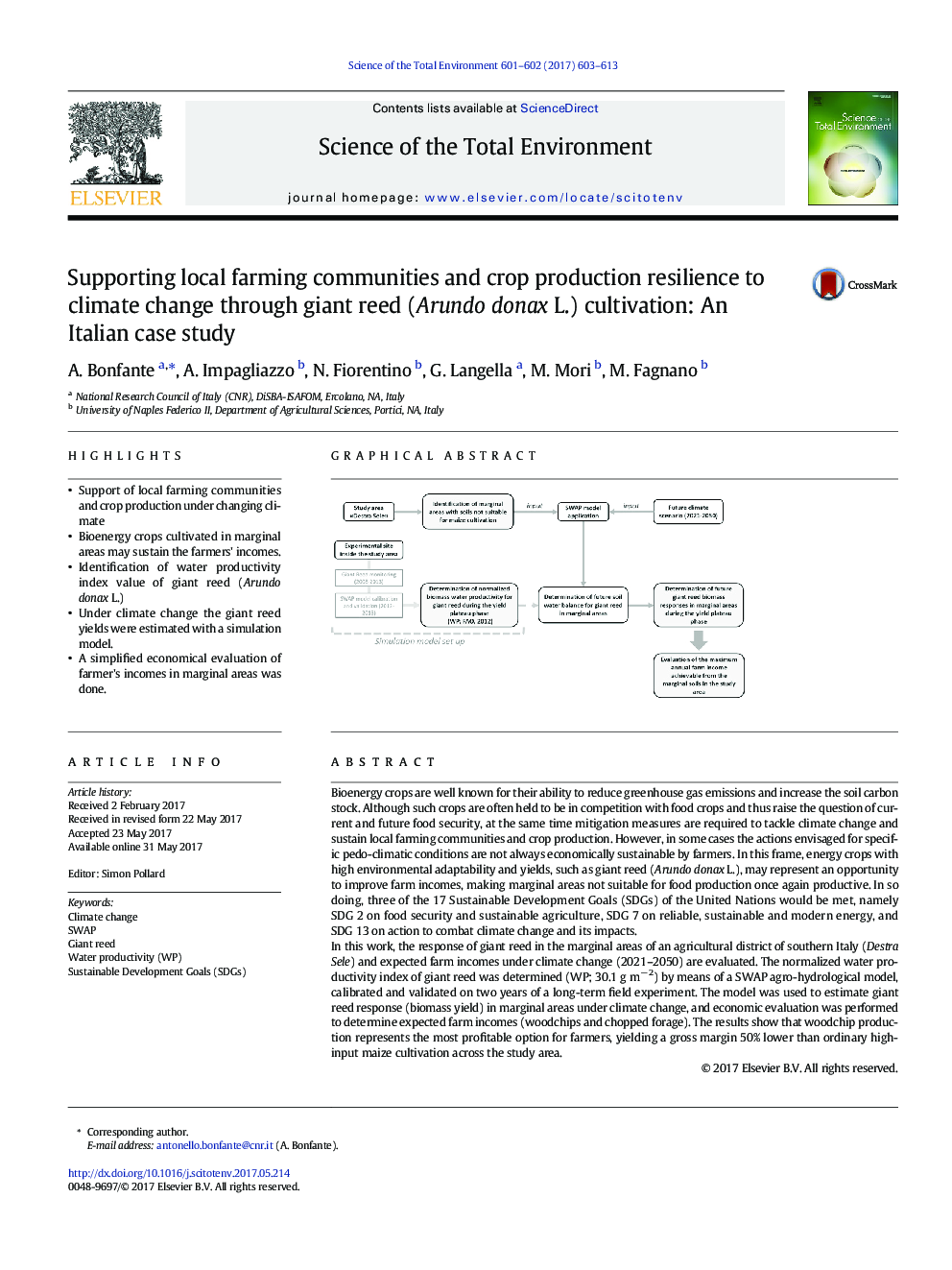| Article ID | Journal | Published Year | Pages | File Type |
|---|---|---|---|---|
| 5750417 | Science of The Total Environment | 2017 | 11 Pages |
â¢Support of local farming communities and crop production under changing climateâ¢Bioenergy crops cultivated in marginal areas may sustain the farmers' incomes.â¢Identification of water productivity index value of giant reed (Arundo donax L.)â¢Under climate change the giant reed yields were estimated with a simulation model.â¢A simplified economical evaluation of farmer's incomes in marginal areas was done.
Bioenergy crops are well known for their ability to reduce greenhouse gas emissions and increase the soil carbon stock. Although such crops are often held to be in competition with food crops and thus raise the question of current and future food security, at the same time mitigation measures are required to tackle climate change and sustain local farming communities and crop production. However, in some cases the actions envisaged for specific pedo-climatic conditions are not always economically sustainable by farmers. In this frame, energy crops with high environmental adaptability and yields, such as giant reed (Arundo donax L.), may represent an opportunity to improve farm incomes, making marginal areas not suitable for food production once again productive. In so doing, three of the 17 Sustainable Development Goals (SDGs) of the United Nations would be met, namely SDG 2 on food security and sustainable agriculture, SDG 7 on reliable, sustainable and modern energy, and SDG 13 on action to combat climate change and its impacts.In this work, the response of giant reed in the marginal areas of an agricultural district of southern Italy (Destra Sele) and expected farm incomes under climate change (2021-2050) are evaluated. The normalized water productivity index of giant reed was determined (WP; 30.1 g mâ 2) by means of a SWAP agro-hydrological model, calibrated and validated on two years of a long-term field experiment. The model was used to estimate giant reed response (biomass yield) in marginal areas under climate change, and economic evaluation was performed to determine expected farm incomes (woodchips and chopped forage). The results show that woodchip production represents the most profitable option for farmers, yielding a gross margin 50% lower than ordinary high-input maize cultivation across the study area.
Graphical abstractDownload high-res image (192KB)Download full-size image
